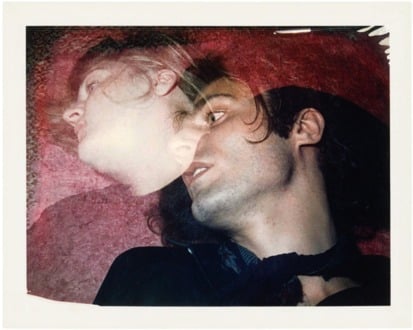The Gay & Lesbian Review
BRIGID BERLIN, one of the members of Andy Warhol’s inner circle, has often been described as his best friend. The two met in the mid-1960s when she was a self-described “troublemaker,” on the run from her exceedingly wealthy Republican parents. (Her father was the longtime chairman of the Hearst Corporation; her parents regularly socialized with President Nixon.) A dedicated amphetamine user—a drug her mother had given her as a child, to lose weight—she shot herself up on a regular basis, earning the nickname of Brigid Poke for the way she jabbed the needle through the seat of her jeans.
But she was also a dedicated photographer who began to take Polaroids in 1968, using a Polaroid 360 camera with a diffuser portrait close-up lens. She said that she loved the mechanical process of inserting the film cartridges even more than taking the pictures. In a recent interview, she recalled that “running out of film was worse than running out of speed.” Fueled by speed, she kept meticulous records of her photographs and was considered a pioneer in the esoteric field of transatlantic Polaroid double exposures. She would take a picture in New York and then, without removing it, fly to Paris and photograph the Eiffel Tower on top of the existing image. She’s credited by many with introducing Warhol to Polaroids. In his introduction to Brigid Berlin Polaroids, John Waters states that she never tried to cash in on Warhol’s fame—yet Berlin wrote in Polaroids that when she needed quick money for drugs, she’d take photos of Warhol’s abdominal scars (incurred after Valerie Solanas shot him in 1968), sell them for five dollars apiece in Union Square, and then go back and take some more.
In the summer of 1970, Berlin met German art dealer Heiner Friedrich, which resulted in a show at his Cologne, Germany, gallery, as well as an essay that Berlin wrote about her two-month stay in Germany. She enthused, all in caps, “The Polaroid camera has changed my eyes! … I look at everything putting it in a small white frame in my mind.” Polaroids was published to accompany her Fall 2015 show It’s All About Me at Invisible-Exports on Eldridge Street in New York’s Lower East Side. That show included some of her “tit prints” (made by pressing ink against her unclothed self) but not reproduced in this book.
The images in Polaroids represent a variety of famous names, some immediately recognizable, such as Patti Smith, a beautifully bejeweled Paloma Picasso, and Diana Vreeland, along with Factory insiders Viva, Ultra Violet, and Joe Dallesandro; and artists like Jasper Johns, Larry Rivers, and Robert Rauschenberg. On the other hand, other subjects cry out for a line or two of description. Editta Sherman? She was a Carnegie Hall-based celebrity photographer. Edwin Denby? He was a poet and dance critic. Few of these images are deadpan—whether candid (such as her many of Warhol) or posed, they cover a range of facial expressions. Some are nude (Berlin particularly enjoyed flaunting a breast or two) or in déshabille. There’s actor Dennis Hopper (an old friend of Warhol) displaying his Barrymore-esque profile. There are a number of self-portraits, and the ones in which Berlin surrounds herself with Warhol’s screen-printed flowers are particularly eye-catching. As longtime Warhol insider and biographer Bob Colacello stated in his introduction to Polaroids, Berlin’s favorite subjects were, in this order, herself and Warhol.
Berlin acted in over a half dozen of Warhol’s and several of John Water’s films, and she’s the subject of the 2000 documentary Pie in the Sky. Now a drug-free elderly lady with a remarkably good memory, Berlin leads a reclusive life in New York. A striking portrait in Polaroids shows her in an art-filled living room, surrounded by dozens of stuffed pillows portraying pug dogs. She had carefully needleworked each of them, a fabric craft requiring extreme attention to detail. A panel discussion at the Strand Bookstore in New York, recorded as part the publication celebration of Polaroids, reveals Brigid Berlin to be an avid TV fan and a hard-right Republican.






